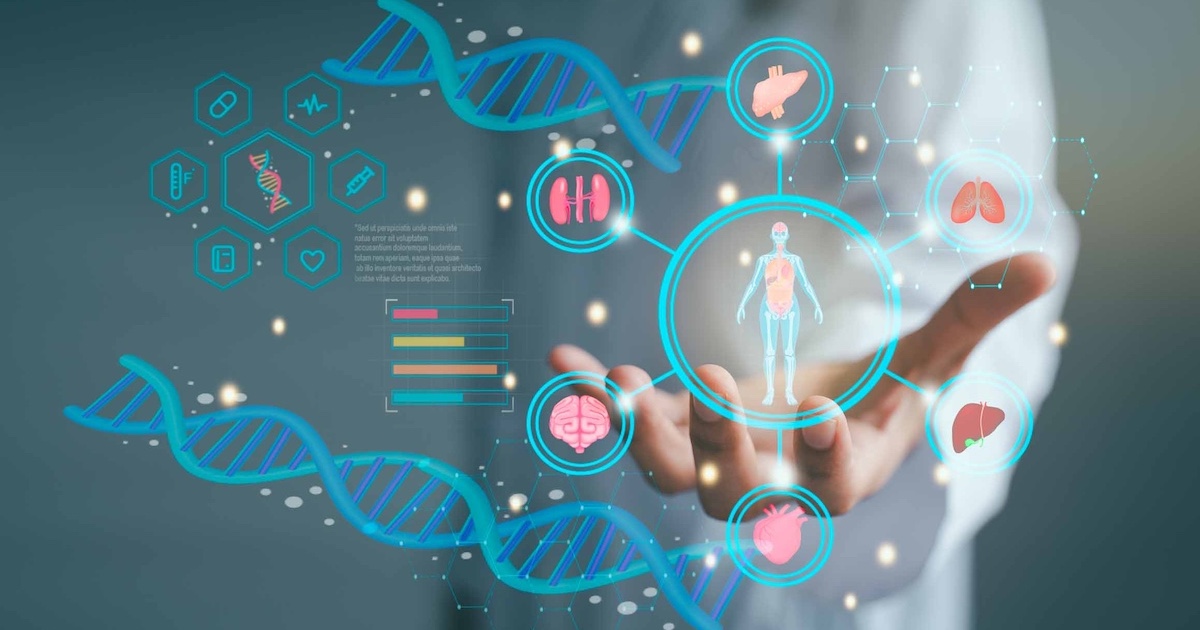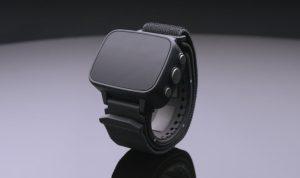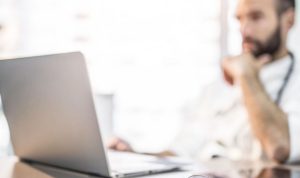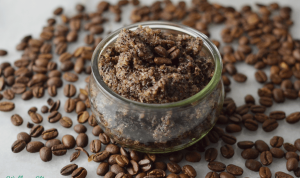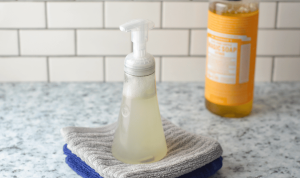
That is half two of MobiHealthNews’ two-part sequence that highlights the evolution of improvements that modified healthcare over the previous a number of many years.
Preserving sufferers protected is a high precedence for hospitals and well being methods. In accordance with The Leapfrog Group, a watchdog group, remedy errors are the commonest errors in hospitals, contributing to just about 7,000 deaths yearly.
Partially two of MobiHealthNews’ sequence, we look at how automated shelling out cupboards streamline the remedy supply course of and scale back remedy errors.
We additionally discover how robotic surgical procedure results in quicker affected person restoration instances, how AI instruments assist radiologists analyze photos with better accuracy and effectivity and the way sensible screens maintain sufferers and their households engaged and knowledgeable about their care.
Automated shelling out cupboards
Shelling out cupboards, remedy carousels and drugs shelling out robots have been round for the reason that Eighties and started as remedy capsule counters within the retail setting, in accordance with Scott Anderson, director of member relations for the part of pharmacy informatics and know-how on the American Society of Well being System Pharmacists (ASHP).
Within the hospital setting, pharmacists use automated shelling out cupboards to trace stock and guarantee medication are the place they should be for the affected person and for nurses to manage them, not within the pharmacy however on the affected person ground.
“These machines helped streamline that in comparison with simply having a cartfill sitting in a affected person’s room,” stated Anderson. “We have been in a position so as to add some know-how to it. I believe the place we have now actually seen shelling out cupboards turn into vital is the remedy security a part of it.”
“As a substitute of simply having a code cart with any remedy, it may very well be within the fallacious spot so you could possibly seize it by chance, having it come out particularly for what you might be asking it for, provides a component of security to it,” stated Anderson.
Anderson stated effectivity has considerably elevated for the reason that introduction of automated shelling out cupboards in comparison with the pharmacists’ guide cart fill checking course of.
“It permits us to do extra medical overview and extra affected person interplay. That’s the place we actually see the worth,” stated Anderson.
“That point effectivity and having the ability to shift our service is the place the shelling out cupboards actually have had a profit.”
Robotic surgical procedure
Conceptually, robots have been round for the reason that Eighties and have been first used within the army. Nevertheless, widespread use of robots started within the early 2000s.
In accordance with the American School of Surgeons (ACS), the general use of robotic surgical procedure has grown considerably over the previous 25 years.
A examine revealed in JAMA Community revealed that robotic surgical procedure elevated from 1.8% to fifteen.1% from 2012 to 2018. Moreover, the usage of robots with particular procedures elevated much more over that very same interval. For instance, the usage of robotic surgical procedure for inguinal hernia restore grew 41-fold, from 0.7% to twenty-eight.8%.
Early on, robotic surgical procedure was ceaselessly utilized in urologic and gynecologic surgical procedures.
Now it’s getting used much more in varied fields, together with cardiology and orthopedics.
Dr. Ross Goldberg, a normal surgeon primarily based in Miami, defines robots utilized in surgical procedure as three-dimensional video platforms with a number of operative arms to assist improve minimally invasive surgical procedure.
“Robotic surgical procedure is on the spectrum of minimally invasive surgical procedure. It does issues that people can not. For instance, [robots] can do issues that the human wrist can not do. Robotic surgical procedure has enhanced what we are able to do laparoscopically and permits the surgeon to work in a area in a a lot tighter space,” Goldberg informed MobiHealthNews.
Goldberg stated a robotic within the surgical suite additionally features as a giant laptop; it information all the info and gives the surgeon with data. For instance, it is aware of what number of devices have been used, what number of instances and the way lengthy. It additionally is aware of the actions a surgeon makes.
As a result of surgical procedure may be taxing on a surgeon’s physique, robotic procedures could make it simpler for a surgeon to sit down at a console. In accordance with Goldberg, this might probably lengthen a surgeon’s profession.
“Within the acceptable circumstances, minimally invasive surgical procedure has proven that there are smaller incisions. We’re in a position to get sufferers up and round faster, out of the hospital quicker and restoration is quicker. From the affected person’s perspective there may be enchancment in high quality of life and enhanced restoration,” Goldberg stated.
AI in radiology
Synthetic intelligence is changing into extra pervasive in healthcare and nowhere is its presence extra evident than in radiology.
Dr. Bernardo Bizzo, affiliate chief science officer on the American School of Radiology (ACR) Knowledge Science Institute, says that since 2016, there was a rise in AI instruments used each inside scanning gadgets, resembling CT, ultrasound, MRI and X-ray machines, and as standalone software program options.
“Once you have a look at how AI is being utilized in healthcare, particularly when speaking about software program as a medical machine, radiology is certainly on the head of the pack,” Bizzo informed MobiHealthNews.
In accordance with Dr. Bizzo, primarily based on knowledge from the ACR AI Central database, about 60% of regulated AI instruments accessible within the U.S. are imaging processing instruments for duties resembling enhancing the standard of photos, assessing anatomical constructions just like the mind or the guts, and assessing breast density on a mammogram.
AI can also be used for computer-aided triage features. These AI instruments assist prioritize and notify the doctor about pressing findings on imaging exams, resembling detecting strokes or pneumothorax.
“Research present that AI instruments might help radiologists analyze photos with better accuracy and extra effectively on very particular, slender duties,” Bizzo stated.
For instance, suppose you detect and measure lung nodules or determine pressing mind findings, resembling a stroke on a CT scan. In these circumstances, AI can probably detect these findings earlier with better reliability.
In accordance with Bizzo, AI instruments might assist early interventions, probably enhancing affected person outcomes and survival charges in sure circumstances.
He stated the brand new wave of generative AI options holds important promise for enhancing affected person care however would require well being methods to implement native validation and monitoring processes to make sure these instruments carry out as meant.
Bizzo pressured that AI-enabled medical gadgets usually are not standalone diagnostic instruments and require interpretation by an skilled.
“A board-certified radiologist should overview their outcomes when used for picture interpretation,” Bizzo stated.
Sensible screens
Though sensible screens or digital whiteboards usually are not in each hospital room, they’re on observe to turn into a typical characteristic.
The whiteboard began as a solution to share details about a person, the household’s wants,
and rapid and urgent care wants that everybody wants to concentrate on.
“As know-how is continuous to develop, we’re seeing this push throughout the nation, particularly with new hospitals that need to turn into hospitals of the long run,” Oriana Beaudet, vice chairman of innovation on the American Nurses Enterprise (ANE), an umbrella group of the American Nurses Affiliation, informed MobiHealthNews.
If clinicians have entry to “unimaginable” know-how, Beaudet asks why that have ought to differ for sufferers or members of the family.
“These new screens and screens which are in affected person rooms are concurrently getting used for communication a couple of affected person’s situation, but in addition there’s a likelihood for people to obtain training data, dietary necessities and digital consultations with a nurse or clinician,” Beaudet stated.
Whereas sensible screens are essential for receiving and delivering care, in addition they function a vital interface between applied sciences.
“The know-how has to seamlessly match into the atmosphere. That’s the pattern. We now have to guarantee that we have now a seamless deployment of know-how and that the know-how is built-in and embedded inside the atmosphere,” Beaudet stated.
In accordance with one other report from The Leapfrog Group, hospitalized sufferers, on common, expertise one remedy error per day. Though a few of these errors could also be benign, many could cause important hurt and even dying.
The annual Leapfrog Hospital Survey charges how properly hospitals use know-how to order and administer remedy to sufferers safely.
Two measures included within the survey are computerized doctor order entry and barcode remedy administration.
Barcode remedy administration was discovered to scale back potential antagonistic drug occasions by 50%.
Partially considered one of our sequence, we examined how barcodes, digital well being information and sensible IV pumps made remedy administration safer and extra environment friendly.
Over time, automated shelling out cupboards made it simpler for pharmacists to trace drug stock and permit them to conduct medical opinions and affected person interactions, whereas robotic surgical procedure is increasing into new areas and permitting surgeons to function extra effectively.
Whereas synthetic intelligence is more and more changing into part of healthcare, its presence is highly effective in radiology.
There’s a substantial physique of proof that these applied sciences, when used correctly, are a part of an ecosystem that helps scale back medical and drugs errors and saves lives.

